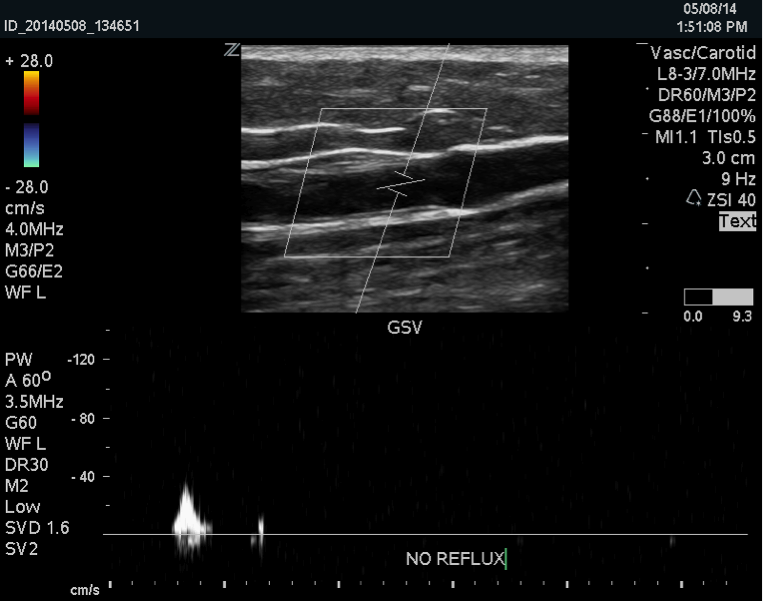What is a Venous Duplex Ultrasound Examination?

This is a normal ultrasound examination. It is negative for venous reflux in the great saphenous vein.

These doppler signals demonstrate 3 seconds of backflow or retrograde flow through incompetent valves. This test is positive for venous reflux in the great saphenous vein.
An ultrasound is a type of noninvasive test that uses sound waves to “see” inside your body, without being exposed to radiation. For this specific exam, it is to see how blood moves through your veins. It can evaluate symptoms including leg pain or swelling, varicose veins and suspected blood clots. There is no preparation needed for this ultrasound and there are no associated risks involved. The test is performed both lying down on a table and/or in the standing position. A technologist will apply a special gel to the entire area that is going to be examined. Then the ultrasound wand is pressed against the skin and moved back and forth. Sometimes the pressure can cause some mild, temporary discomfort, but most people find the test to be completely painless. As the wand is moved up and down the leg, images and videos are being projected onto the monitor and stored. The test takes between 20-50 minutes and there are no special instructions after it is completed, you should resume all normal activities. In a venous exam, particular attention is paid to the function of the valves inside the veins. These valves act as one-way gates for blood to travel up the leg. When a vein becomes weak it dilates causing the valves to leak and not close properly, resulting in a back flow of blood. This is called venous insufficiency or reflux. Reflux is most common in our superficial venous system; in our great saphenous vein and small saphenous vein. When reflux is identified in these veins, it can be treated with great success by a vein specialist.





